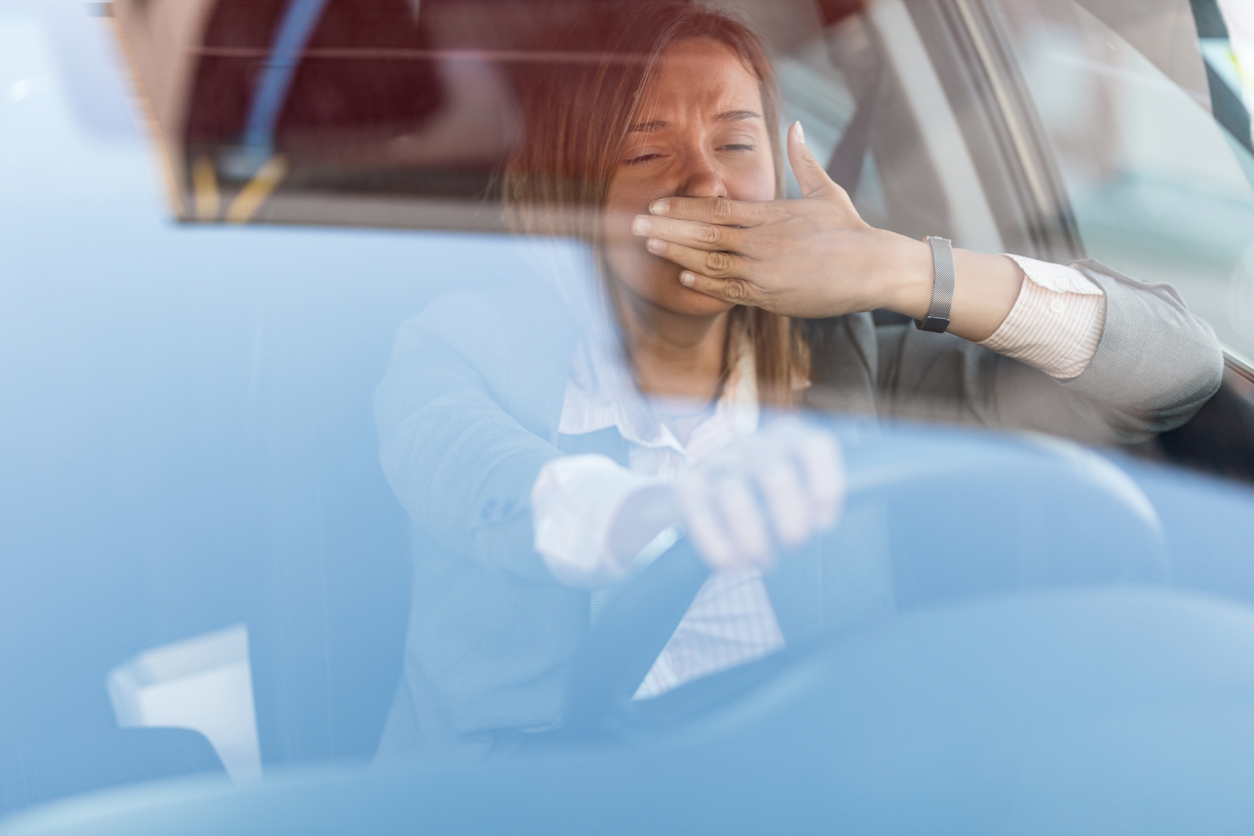With the average American working longer hours and getting even less sleep, drowsy driving is a serious issue of the modern world. According to the National Sleep Foundation, the problem is so pervasive that sixty percent of American adults admit to drowsy driving, and about a third have actually fallen asleep at the wheel. Given that exhaustion has many of the same effects on the human body as intoxication, drowsy driving endangers the driver and everyone around them. The dangers of drowsy driving are very real.
That statement may seem a bit extreme, but scientific data support the comparison. Regarding reaction times and decision making, a person who has been awake for 24 hours straight behaves in a very similar way to a person with a blood-alcohol level of .10. The benchmark for drunk driving is a minimum blood alcohol level of .08. An exhausted driver may actually behave more erratically behind the wheel than a person who could still legally receive a DUI.
Dangers of Drowsy Driving
The results are staggering. The Center for Disease Control reports that 72,000 crashes recorded in the year 2013 directly involved drowsy driving. In 2015, the Governor’s Highway Safety Association report linked about 5,000 deaths to exhausted drivers. The National Highway Traffic Safety Administration claims that drowsy driving claimed at least 795 lives in 2017. You may think you’re just a little tired, but your decision to drive could be the decision between life and death.
Recognizing the Signs
Two primary factors contribute to the widespread issue of drowsy driving. Occupational demands and undiagnosed sleep disorders are commonly cited in professional reviews of the issue. However, addressing drowsy driving necessarily starts with self-awareness. Before getting behind the wheel, you need to assess whether you are capable of driving responsibly.
- Note how long it has been since you received adequate sleep. If it has been more than 18 hours, then you may want to call for a ride and just pick up your car the next day.
- Check yourself for frequent yawning or blinking. If you feel that you are blinking more often than usual or struggling to focus, then your body is likely unable to react quickly enough for you to drive safely. In fact, you may end up falling asleep at the wheel.
- If you are already driving and find yourself blanking on how you got to your current location or missing turns on a well-known route, you need to pull over. Call a friend. Call a cab. Just don’t drive.
- If you are driving and find yourself slowing down or drifting out of your lane, you need to pull over. Calling someone in the middle of the night may be a headache, but no one in your life would rather have you drive while impaired.
- Check any medications you may be taken to see if they cause drowsiness.
- Avoid driving during peak sleepiness periods. Most crashes involving drowsy drivers occur between midnight and 6 AM and in the late afternoon. Those are the times when your body is most likely to succumb to exhaustion.
Getting Help
If you are waking up tired or having trouble getting adequate sleep, then you may have an undiagnosed sleep disorder. At Sleep MD sleep centers in New York, Dr. Mayank Shukla will help you to determine what is contributing to your lack of sleep and prescribe a treatment plan that will allow you to get much-needed rest. To maximize your initial consultation and aid Dr. Shukla in his work, try keeping a sleep diary before your visit. Take note of when you fall asleep, when you wake up, and how you feel in the morning. Information regarding caffeine intake and exercise can also be relevant to determining potential underlying causes. Avoid the dangers of drowsy driving by obtaining healthy, regular sleep.


